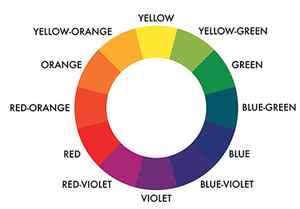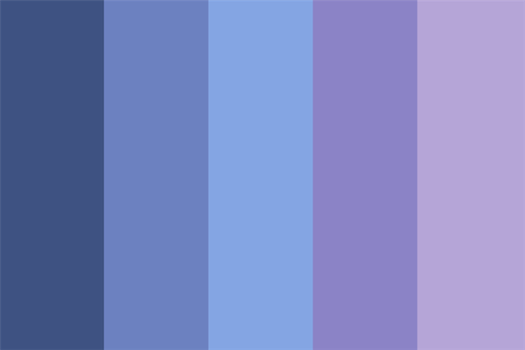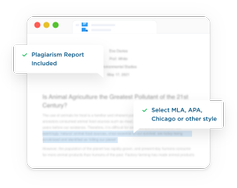When designing a room, blue-purple goes well with neutral colors like gray, white, black, and tan. Too many colors in a house can be overwhelming, so it’s pleasing to see a touch of blue-purple color in an otherwise neutral space. For example, you could have a gray couch, but having blue-purple pillows, flowers, or paintings nearby could make it look more appealing.
What Color Do Purple and Blue Make When Mixed?

Blue and purple go so well together, which is why they make a pleasant and predictable mixture. They’re both cool colors that sit close to each other on the color wheel. So, both colors and their mixture work in harmony in art and design.
The results of a blue and purple mixture may vary based on the shades of blue and the mediums you use. However, most of the results will be fairly similar.
What Color Do Purple and Blue Make When Mixing Paint?
Blue is a primary color and purple is a secondary color, and they mix together to create blue-purple , sometimes called blue-violet, which is a tertiary color. There are many shades of blue-purple, including well-known colors like violet, indigo, lavender, and periwinkle. Yet, blue-purple is the best name for a 50/50 mixture.
What are Tertiary Colors?

Tertiary colors are created when a primary color is mixed with a secondary color that’s beside it on the color wheel. There are six tertiary colors on the RYB color wheel: yellow-orange, red-orange, red-purple, blue-purple, blue-green, and yellow-green. As you can guess, each color is a 50/50 mix of the two colors in its name.
Types of Blue-Purple
There are many shades of blue-purple, some of which have much more blue in them than others. These different types of blue-purple are created by mixing in more blue or purple, using different types of blue and purple, or adding white or black into the mix.
For example, if you mix light blue with purple, you’ll get more of a lavender or periwinkle color. If you mix purple with navy, you’ll get a deeper, darker purple.
If you add extra blue or purple, you might get colors like mauve , indigo , lilac , or plum . They’re all types of blue-purple, but their mixes aren’t perfectly even.
How to Make Blue-Purple Lighter or Darker

If you have a perfect mixture of blue and purple, there are plenty of things you can do to create a more unique mix. Here are some tips for making your blue-purple lighter or darker.
Mixing Lighter Colors
Adding some white to the color will make it lighter, but it might require a lot of white to create a significant change. Using lighter versions of blue and purple to begin with can also create a brighter tint.
Mixing Darker Colors
Adding a touch of black can darken your blue-purple, although this mixture is usually dark to begin with. Only use black sparingly as it can quickly overpower the rest of the color. Adding in darker shades like navy blue can also alter the color and make it not as vibrant.
Does Blue-Purple Have a Meaning?

Blue-purple doesn’t have one clear meaning, but since it’s a perfect mix of blue and purple, it holds some meanings of both colors. Blue is known for being a color of trust, security, and loyalty while purple has meanings of mystery, royalty, and imagination.
Blue-purple might be a sign of dignity, devotion, and independence. It represents strong relationships and beliefs, but also a sense of excitement and wonder for the future. Many people see types of blue-purple as signs of creativity, peace, and magic.
A whimsical color like blue-purple is sure to intrigue others. So, while it might not be as well-known as purple or blue, it’s a great color to use in your designs. You can decide which meaning you want to shine through in your art.
Can You Mix Colors to Create Blue and Purple?
If you don’t have blue and purple paint, you can mix other colors to create them. Yet, since blue is a primary color, the mixture isn’t quite so obvious. To get blue, you’ll have to use subtractive color mixing through the CMYK color model, which is primarily used for ink. According to that color wheel, magenta and cyan will give you blue.
Being a secondary color, purple is much easier to mix. It’s made of 50% blue and 50% red. So, when you mix purple and blue together, it’s like creating purple with extra blue added to it.
What Color Do Purple and Blue Make When Mixing Lights?

When it comes to lights, blue and purple are not often mixed together, as the light color model (RGB) uses violet instead of purple. Magenta and blue make violet, which is a tertiary color.
Mixing the primary color blue with the tertiary color violet would give you a slightly blue-violet color. So, you could say that it’s the light equivalent of blue-purple.
Understanding Different Color Models
There are three different color models for color mixing: RYB, RGB, and CMYK. All three are used for different things, and some create different results when colors are mixed. Understanding these color models and the difference between additive and subtractive color mixing will help you see why blue and purple are rarely mixed in lighting.
RYB
RYB is the subtractive color model that most people are familiar with since it’s the one that we often learn in early art classes. This color wheel is used for mixing paint and other hands-on art mediums together. In the RYB color model, red, yellow, and blue are the primary colors. All other colors can be made by mixing those together.
RGB
RGB is the additive color model that’s used for mixing lights. In lights, the primary colors are red, green, and blue, rather than red, yellow, and blue. So, their mixtures are slightly different. For this color model, red and green make yellow, red and blue make magenta, and blue and green make cyan.
CMYK
The subtractive CMYK color model is used primarily for ink and printing. On this color wheel, the primary colors are cyan, magenta, and yellow. All three colors mix together to make black. In the CMYK color model, cyan and magenta make blue, magenta and yellow make red, and cyan and yellow make green.
How Do Our Eyes Perceive Color?

When we look at an object, that item absorbs all the colors on the visible light spectrum, except the one that we perceive it as. For example, if you look at a red apple, it absorbs the blue and green colors, and then it reflects red. So, our eyes see the apple as red.
In our eyes, we have cones that sense colors. In particular, we have cones for red, green, and blue, which are the primary colors on the RGB color model. When different amounts of these colors are added together, we perceive mixtures of the colors.
The cones in your eyes detect wavelengths on the visible light spectrum. How we see color is all about the colors reflecting off an object and the frequency of the wavelengths that our eyes perceive.
We detect the colors, and then our brain has to process them in a certain way. So, every time you look at a colorful object, there’s a lot more going on than you realize. That’s why color mixing is so much different for lights than it is for paint or ink.
Violet vs. Purple
Purple
Hex: #800080
RGB: 128, 0, 128
CMYK: 0, 100, 0, 50
Violet
Hex: #8F00FF
RGB: 143, 0, 255
CMYK: 44, 100, 0, 0
The names purple and violet are often used interchangeably, but they’re actually two different colors. Purple is a mixture of 50% blue and 50% red, while violet contains a little more blue than red.
So the difference between the two is fairly noticeable when looking at the colors side by side. Technically, violet is the wavelength we see on the visible spectrum and the color used in the rainbow.
What colours combine nicely with blue and purple?

The Art of Choosing is a series discussing fabric, color, and the fabric selection process! For past posts, click here.
As I mentioned in the last Art of Choosing post, I want to spend the next few weeks talking about different color schemes that can be pulled directly from the color wheel! 🙂
Split-Complementary Color Schemes
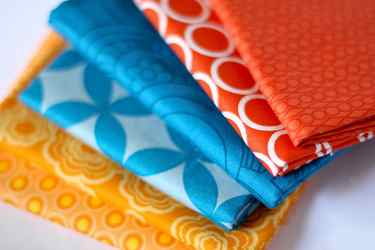
The Art of Choosing: Split-Complementary Color Schemes, a photo by jenib320 on Flickr.
Today is all about Split-Complementary color schemes! Split-Complementary color schemes are very similar to the Complementary colors schemes that we talked about last time. They’re made by taking a single color on the color wheel, looking directly across to it’s compliment but using the colors on either side of the compliment. I think (hope!), that will make more sense in the photos below! So, let’s explore the 12 split-complementary color schemes in fabrics!
Red, Yellow-green, Blue-green
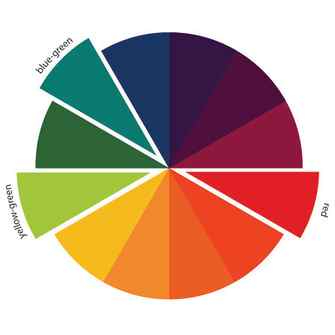
Red, Yellow-green, Blue-green, a photo by jenib320 on Flickr.
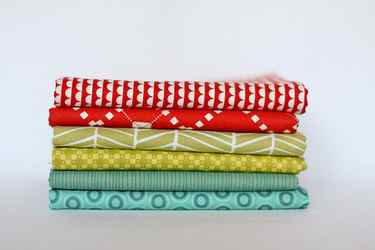
Red, Yellow-green, Green-blue, a photo by jenib320 on Flickr.
Red’s complement is Green, the two colors on either side of Green are Yellow-green and Blue-green.
Red-orange, Green, Blue
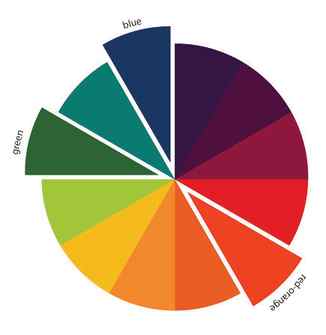
Red-orange, Green, Blue, a photo by jenib320 on Flickr.
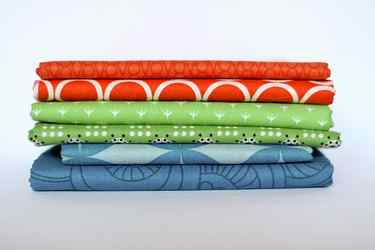
Red-orange, Green, Blue, a photo by jenib320 on Flickr.
Red-orange’s complement is Blue-green, the two colors on either side of Blue-green are Green and Blue.
Orange, Blue-green, Blue-purple
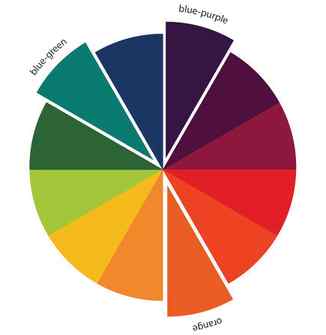
Orange, Blue-green, Blue-purple, a photo by jenib320 on Flickr.
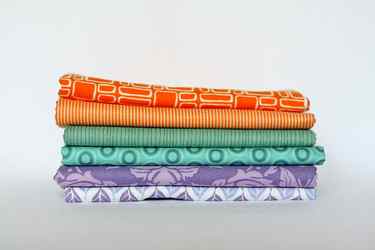
Orange, Blue-green, Blue-purple, a photo by jenib320 on Flickr.
Orange’s complement is Blue, the two colors on either side of Blue are Blue-green and Blue-purple.
Yellow-orange, Blue, Purple
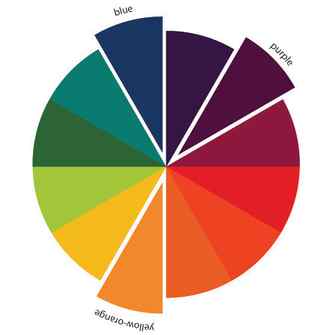
Yellow-orange, Blue, Purple, a photo by jenib320 on Flickr.
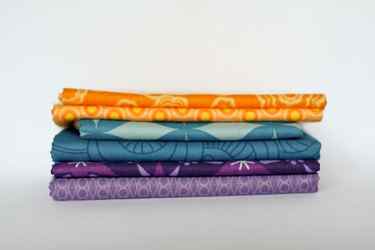
Yellow-orange, Blue, Purple, a photo by jenib320 on Flickr.
Yellow-Orange’s complement is Blue-orange, the two colors on either side of Blue-purple are Blue and Purple.
Yellow, Blue-purple, Red-purple
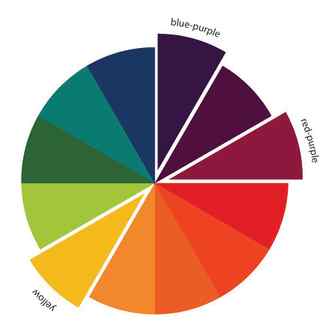
Yellow, Blue-purple, Red-purple, a photo by jenib320 on Flickr.
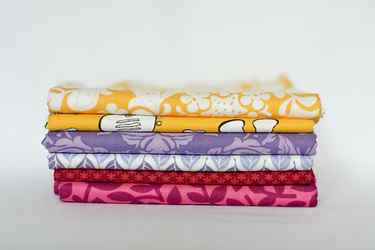
Yellow, Blue-purple, Red-purple, a photo by jenib320 on Flickr.
Yellow’s complement is Purple, the two colors on either side of Purple are Blue-purple and Red-purple.
Yellow-green, Purple, Red
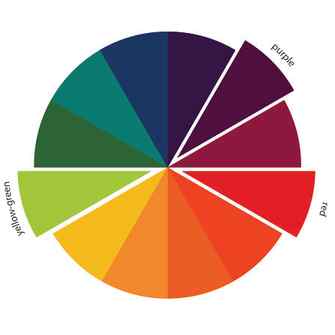
Yellow-green, Purple, Red, a photo by jenib320 on Flickr.
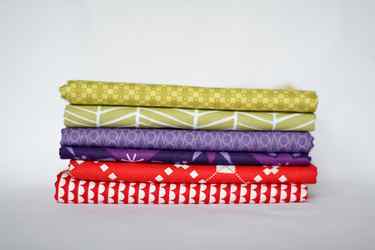
Yellow-green, Red, Red-purple, a photo by jenib320 on Flickr.
Yellow-green’s complement is Red-purple, the two colors on either side of Red-purple are Purple and Red.
Green, Red-purple, Red-orange
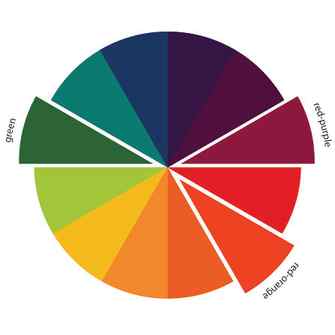
Green, Red-purple, Red-orange, a photo by jenib320 on Flickr.
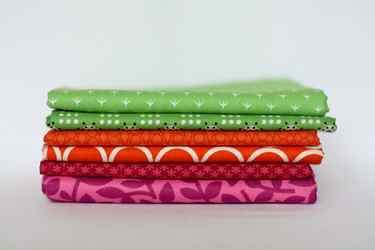
Green, Red-orange, Red-purple, a photo by jenib320 on Flickr.
Green’s complement is Red, the two colors on either side of Red are Red-purple and Red-orange.
Blue-green, Red, Orange
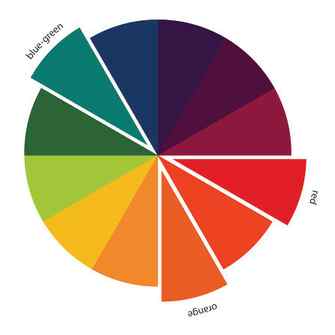
Blue-green, Red, Orange, a photo by jenib320 on Flickr.
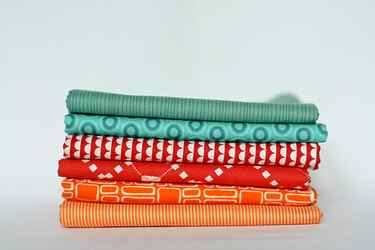
Blue-green, Red, Orange, a photo by jenib320 on Flickr.
Blue-green’s complement is Red-orange, the two colors on either side of Red-orange are Red and Orange.
Blue, Red-orange, Yellow-orange
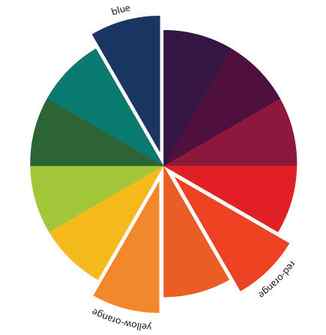
Blue, Red-orange, Yellow-orange, a photo by jenib320 on Flickr.
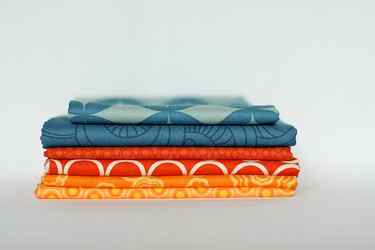
Blue, Red-orange, Yellow-orange, a photo by jenib320 on Flickr.
Blue’s complement is Orange, the two colors on either side of Orange are Red-orange and Yellow-orange.
Blue-purple, Orange, Yellow
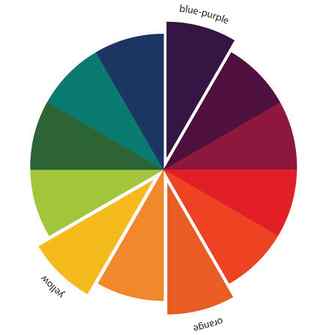
Blue-purple, Orange, Yellow, a photo by jenib320 on Flickr.
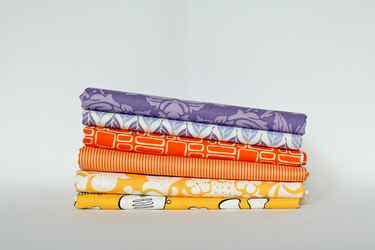
Blue-purple, Orange, Yellow, a photo by jenib320 on Flickr.
Blue-purple’s complement is Yellow-orange, the two colors on either side of Yellow-orange are Orange and Yellow.
Purple, Yellow-orange, Yellow-green
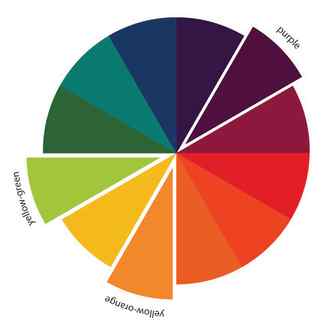
Purple, Yellow-orange, Yellow-green, a photo by jenib320 on Flickr.
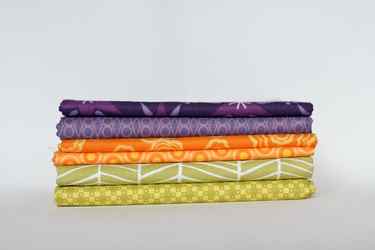
Purple, Yellow-orange, Yellow-green, a photo by jenib320 on Flickr.
Purple’s complement is Yellow, the two colors on either side of Yellow are Yellow-orange and Yellow-green.
Red-purple, Yellow, Green
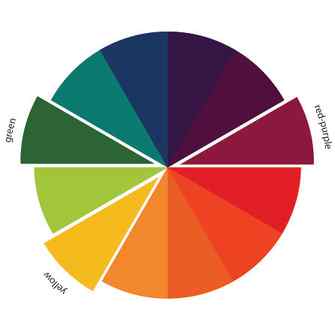
Red-purple, Yellow, Green, a photo by jenib320 on Flickr.
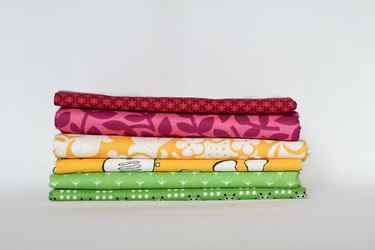
Red-purple, Yellow, Green, a photo by jenib320 on Flickr.
Red-purple’s complement is Yellow-green, the two colors on either side of Yellow-green are Yellow and Green.
Now I’d like to share a project I made using a split-complementary color scheme:
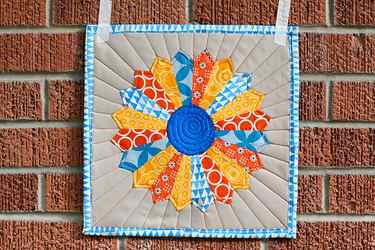
Dresden, a photo by jenib320 on Flickr.
Blue, Red-orange, Yellow-orange: A simple Dresden plate mini quilt!
Again, if you’d like to pull some split-complementary fabric stacks of your own, or share your split-complementary color projects, feel free to post in the flickr group! Tomorrow we’ll be talking about Harmonizing color schemes! 🙂
Happy Sewing!
Note: I created the color wheel graphics myself, so please don’t borrow them without crediting me and linking back! Thanks! 🙂
What is the colour combination of blue and purple?
Bisexual Pride Flag The pink is intended to represent attraction to the same sex only, the royal blue to the opposite sex only, and the purple attraction to all genders / more than one..
What colors can you make with purple?
Mixing of Secondary ColorsPurple: Red and blue.Orange: Red and yellow.Green: Blue and yellow.6 days ago
How do you make deep purple color?
Red and blue make purple when mixed together. However, different shades of blue and red colors, create different shades of purple color. Overall, Ultramarine Blue makes a dark purple, while purple mixed with Cobalt Blue will create a lighter shade of purple.
What color is blue and black mixed?
Assuming equal quantities of black and blue, you would have … tada: blue black. Add white to the mix (that is how you get light blue) and you have pale blue black. But if you add full strength black to light blue, depending on the proportions, you will get a dark grey blue.
What color does red and green make?
yellowIf all three primary colors of light are mixed in equal proportions, the result is neutral (gray or white). When the red and green lights mix, the result is yellow.
Can I dye my hair purple over blue?
Purple. Purple is a color that looks good with all skin and hair types. It has blue in its make-up, so your blue will be a good base for this change. You can choose a dark purple or even an intense grape-purple if you’re up for it.
What happens when you mix purple and teal?
It’ll go blue, though it may be slightly more muted than a regular cobalt blue. It won’t look brown or anything, though.
What is purple and blue make?
Purple and blue makes what color? If you add light blue, you will get a lavender color. If you add purple and dark blue (navy) you will get a deep, rich dark purple.
What happens when you mix blue and purple?
Mixing blue and purple requires you to mix a primary color with a secondary color. Mixing these colors together creates the tertiary color blue-violet. … If you choose to use equal amounts of each, you will get a different shade than if you add more blue than purple or vice versa.
What happens when you add pink to purple?
When the colors pink and purple are mixed together, the resulting color is a magenta or light plum color. The new color’s hue depends on the amount of purple and pink used in the mixture. Both pink and purple have red as one of the original hues used to create the colors.
Does blue and purple make Pink?
Originally Answered: What color do blue, purple, and pink make? a lighter purple.
What color does purple and green make when mixed?
brownThus, when mixing purple and green together, the results can either be a form of brown or they can be a muddy gray color.
What 2 colors make red?
Using the subtractive color wheel’s primary colors, you can create red by mixing magenta and yellow. We can’t mention subtractive mixing without talking about additive mixing. The primaries here are red, green, and blue.
What two colors mixed together makes Brown?
Therefore, in order to make brown in painting, printing, and digital art, you need to combine colors. You can create brown from the primary colors red, yellow, and blue. Since red and yellow make orange, you can also make brown by mixing blue and orange.
Is Black and Blue a good combination?
If you’ve heard the phrase “black and blue never do” you’re probably of the mind that navy and black together is one of those timeless, inarguable fashion faux pas. … “Dark shades naturally work well together, so there’s no danger of clashing, and the combination of blue and black looks particularly sophisticated.”
What happens if you mix purple with pink?
Fuchsia is a bright purplish-red color. The fuchsia color code is #FF00FF. What colors do you mix to get fuchsia? If you’re painting; red, pink and purple paint mixed together will create fuchsia’s vibrant hue.
What color does purple and red make?
magentaPurple and red make magenta, which is a monotone cousin to purple. The hallmark of interior design is the use of contrasting colors or monotone colors to create an interesting space.
What color does orange and purple make?
brownMixing purple and orange together creates various hues of brown depending on the amount of orange and purple used. Adding more orange brightens the shade of brown due to the red and yellow primary colors.
What color does blue and purple make on hair?
When you mix blue and purple dye, you’ll get different shades of purple. But it’ll be the blue dye that determines exactly what color you get. And you’ll have more color options if you use semi-permanent dyes. If you mix a medium blue with purple, you’ll end up with purple with blue tones.
Does blue and purple make black?
Black paint can be made with equal parts red, yellow, and blue paint mixed together on a palette. You can also mix complementary colors such as blue and orange, red and green, or yellow and purple. Mixing blue and brown can also result in a rich black.
What color can I mix with purple?
So for a triad, you’d get purple, green, and orange. You can also play with purple in its various tints and shades, and mix and match with neutrals like white, black, grey, and brown.

